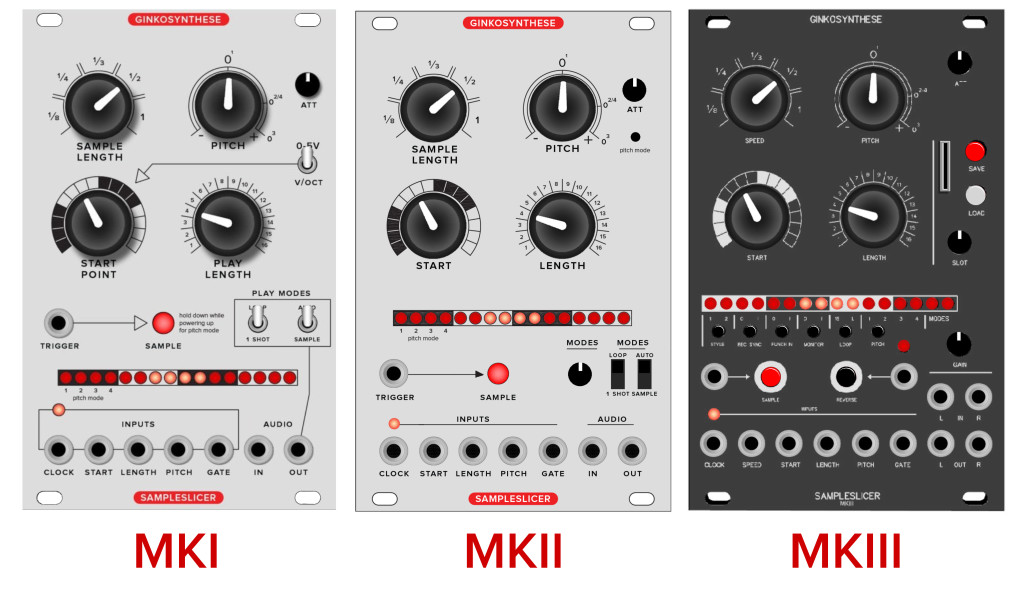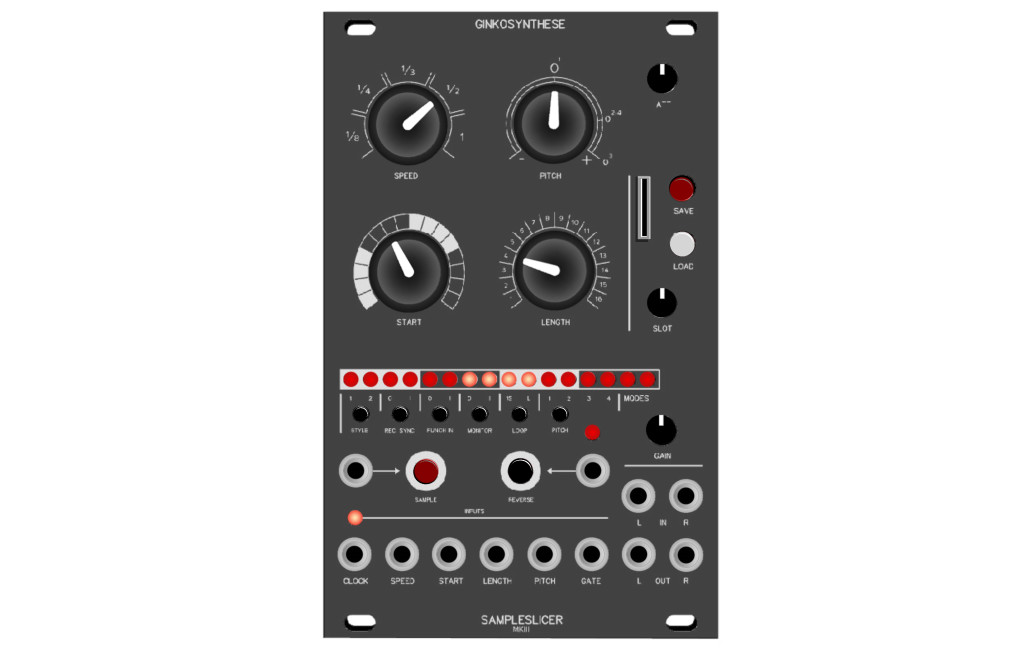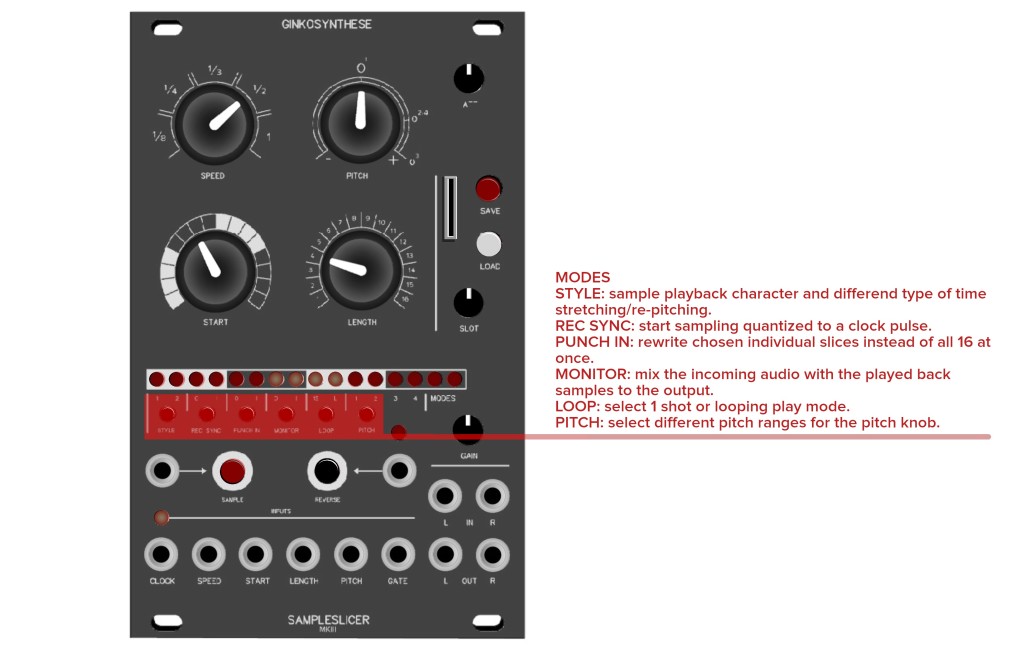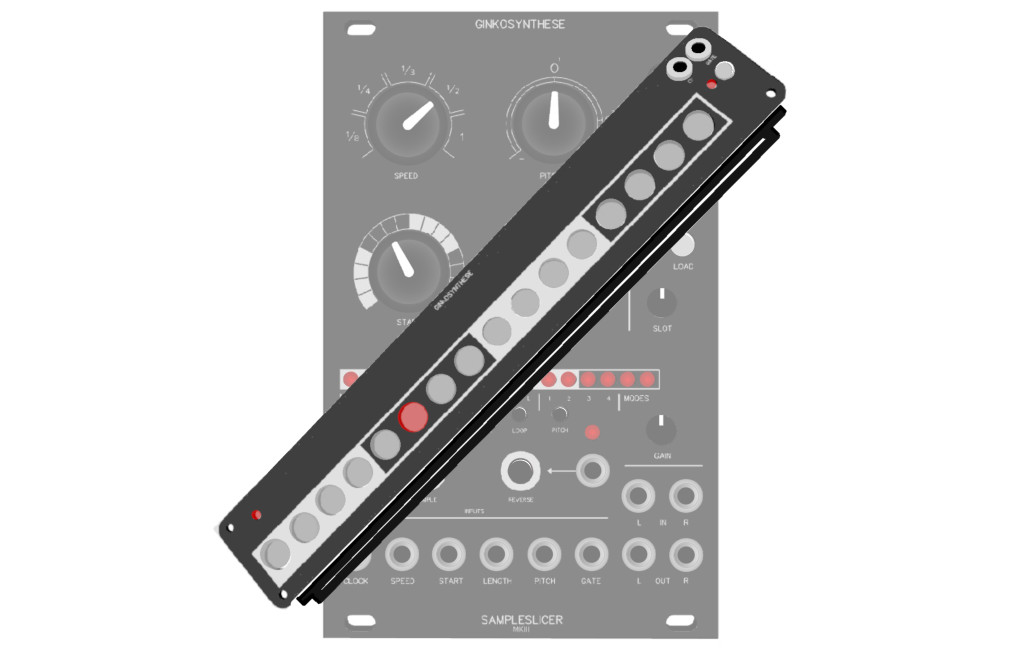It samples! It slices! It dices! The legendary Sampleslicer was due for reinvention with current-generation chips. Now the MKIII is up on crowdfunding site IndieGogo, with a load of new features and an all-new USB keyboard companion.

Like a lot of digital modules, the older-generation Ginkosynthese Sampleslicer (pictured at top) had become hard to find as chips became unavailable. With the MKIII, you’ll no longer have to throw your fate in with the used module marketplace. And you get a lot more in the deal. The MKIII retains the attractive, intuitive design of the original, but with a bunch of new features. Designer Jan Willem (Ginkosynthese) has teamed up with firmware coder Rob Bothof for this one.
If you’re just joining us, this is not a sample player. It is a completely realtime, completely playable, completely voltage-controllable sampler and slicer, with clockable/free slices and pitch control.
First, what’s new on the Sampleslicer itself:

SD card for loading and saving. Yeah, finally!
High-quality ADC/DAC. And that means –
STYLE – playback character. You can set the MKIII to 12-bit mode, just as on the MKI and MKII, for an old-school 80s sampling vibe (MPC60, E-MU SP-1200, Akai S900, etc.). But now you also have the option of a higher-quality mode, taking advantage of the new onboard ADC/DAC, and its own repitching behavior. That means you can choose based on the source material which sounds better, grittier, or more satisfying.
REC SYNC. Well, this is huge: now even the record can be quantized to external clock.
PUNCH IN. Rewrite individual slices while retaining the rest of the sample. Wait… sheesh, even my software samplers don’t allow this.
MONITOR. Mix incoming audio with played back audio (saving you an external mixer, basically).
REVERSE. Reverse samples. There’s a dedicated button, plus external control via gate signal.
STEREO and MONO operation. Previous versions were monophonic only.

Well, this all moves this into a range that starts to make it look competitive even with other desktop samplers or for use alongside your computer. And one more thing:

SCONTROL accessory. This is a custom USB keyboard controller that gives you quick access to start point, and lets you play through slices on the keys, with visual feedback on startpoint via LED. This links up to the repeating loop/1-shot modes, and pairs perfectly with that new slice punch capability.
All in all, this is an extraordinarily live performance-friendly sampler, especially with SCONTROL. This gives a lot of other sampling hardware a run for their money; it’s the rare Eurorack module that starts to be performative the way something like a Roland SP-404 is. So I imagine it’ll find a home not just in the rich kids’ massive Wall o’ Gear Eurorack setups, but quite a few small skiffs for road use, too.
I’ve followed Jan’s engineering work for ages, and I know the reputation of the MKI/MKII, so I’m keen to try this. Adding stereo and – much as I love 12-bit (it does sound better on some material), the added fidelity – plus SD card, plus the performance modes? This is entirely new territory.
And the price isn’t that far off from desktop stereo samplers, either. The module alone is €390 EUR, or add the SCONTROl accessory for a total of €470.
There’s a whole walkthrough of the workflow on the site. Crucially for us nerds, here’s what’s under the hood:
The MKIII is running on a RP2040. The RP2040 is a 32-bit dual ARM Cortex-M0+ microcontroller integrated circuit by Raspberry Pi Ltd.
The AD/DA converter for the audio path is a high quality AK4558EN 32-bit 2 channel audio CODEC with PLL by Asahi Kasei Microdevices/AKM.
The CV inputs are converted to 12bit.
Yep, I bet we’ll see more gear with those chips, too, and no complaints here.
IndieGogo – shipping expected in September, so line those live modular gigs up for the fall, eh?:
Oh yes, and as someone asked about the Make Noise Morphagene – this is sort of the mirror image of that. Instead of tape (Morphagene), think digital sampler/slicer (Sampleslicer – in the name). Instead of bending around “between the notes” as Make Noise puts it, think clocked slices. Or, if you like, splices (Morphagene) versus slices (Sampleslicer). The Morphagene has some basic layering capabilities; the Sampleslicer has the ability to punch in particular slices.
The Morphagene does have splice markers, and both have on-demand, push-button recording (which is awesome live). And there is a gate input on the Morphagene, too, so you could approach the Morphagene like the Sampleslicer if you really wanted. But the approach to sound and interface are different, and you’d have to manage clock divisions and triggers externally with the Morphagene, whereas the Sampleslicer MKIII and SCONTROL make it pretty convenient to do that right on the unit. That is, if you have the Make Noise already, I think you can always go deeper with that, but you might want to compare if you’re looking to purchase one or the other.
Some more experienced module owners here might have a better answer than that (or other comparisons); feel free to sound off in comments.